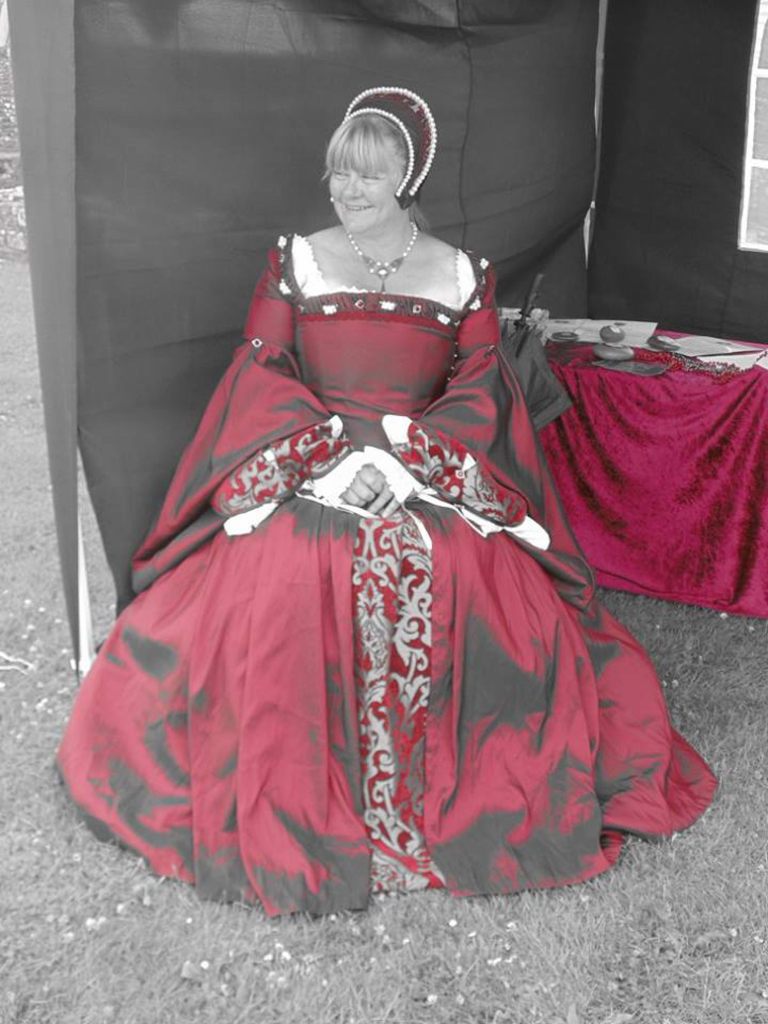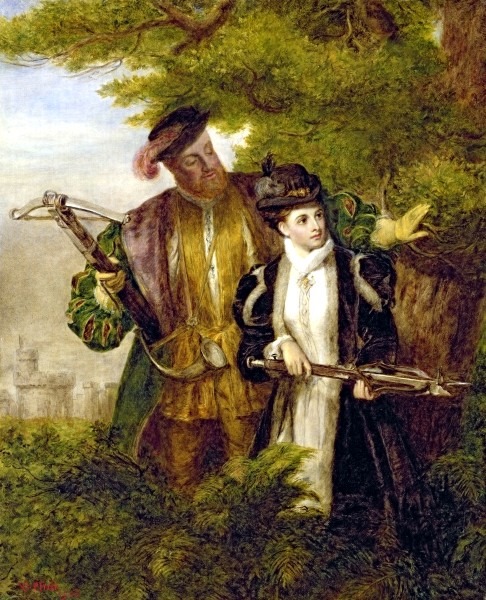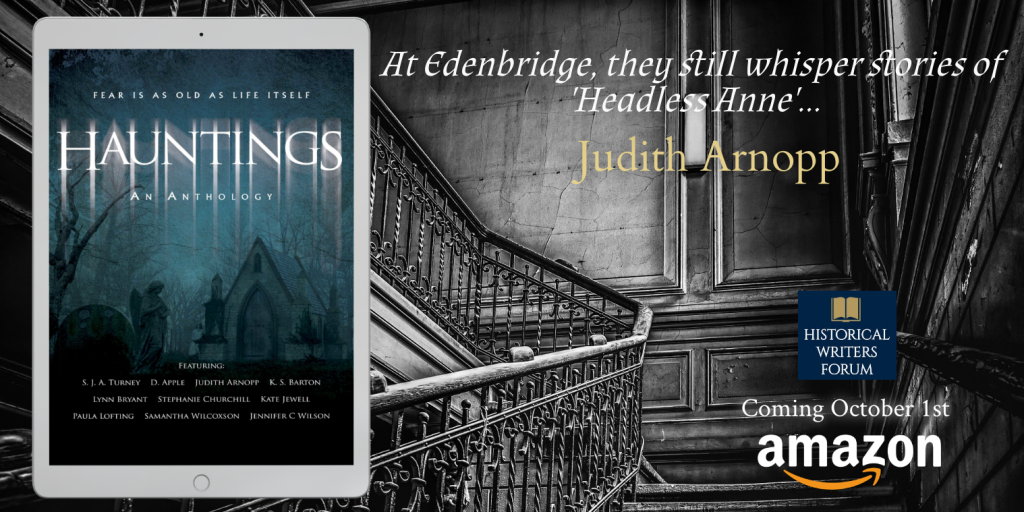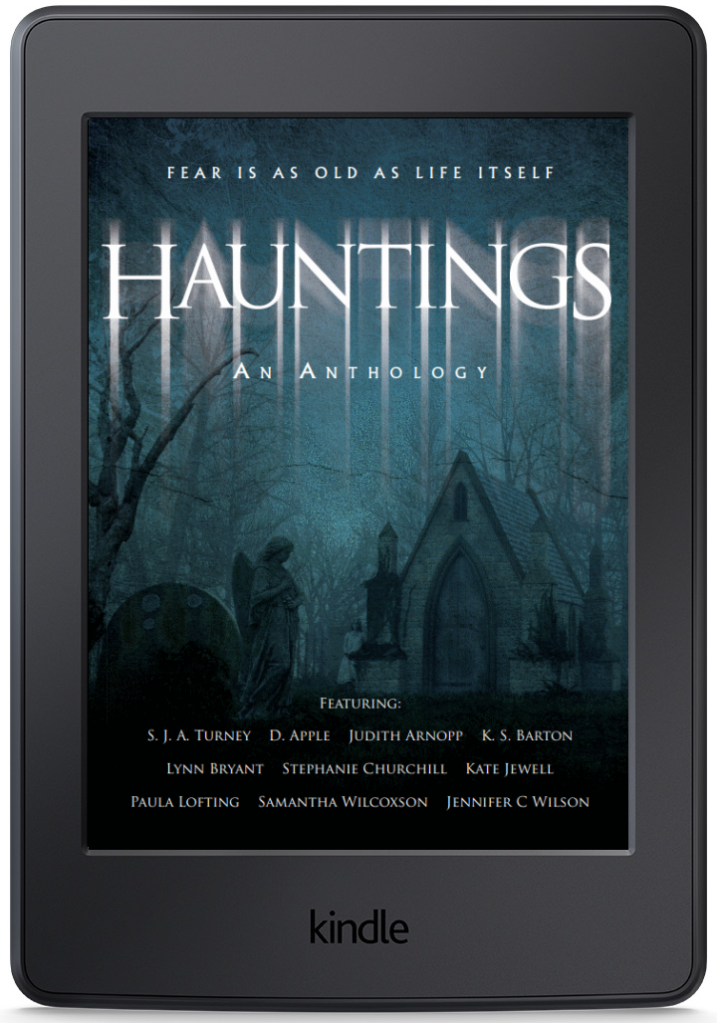The inspiration behind The Haunting of Edenbridge Castle, by Judith Arnopp
To celebrate the release of Hauntings, the collection of historical ghost stories released this month, today I’m hosting one of the other authors in that selection, the talented Judith Arnopp, who’s here to tell you a little about the background of her tale, the Haunting of Edenbridge Castle. I hope you enjoy, and don’t forget to go buy the book. Ten great spooky tales for Halloween, the book link follows at the end of the post. For now, I’ll turn you over to Judith.

It starts with a cold case, an unsolved disappearance of a police officer just before the outbreak of WWII. The story line moves backwards, through the witchcraft trials of the 17th century, and further back to the time of Henry VIII and the childhood of Anne and George Boleyn. And it all takes part in an abandoned castle that rings with the echoes of past inhabitants.
I don’t believe in ghosts but, of course, I’ve never seen one. I expect I’d change my mind if I did. When I was asked to contribute a story to Hauntings, I was in two minds as to how to tackle it. In the end, I just sat down and started typing to see what would happen and Edenbridge was born. A castle teeming with past tragedies, grief and human frailty.
As the astute will have noticed, I originally set the story at Hever Castle, but I changed the name because the history of Hever is so well known, I didn’t want to blur the edges between fact and fiction even further.

I may not be convinced of the existence of ghosts but I have a keen interest in perspective and human perception so the question of how a spirit might view itself was very appealing. Would they know they were dead, or would they just live in a constant spiral of events, reliving their reality, or would they somehow become fused in the life of the person they haunted. Several of the characters in the story question who is the ‘haunt’ and who the ‘haunted.’ To Anne and George, the girl is the spirit but she is certain the people she ‘sees’ are shades of the past. But can she be sure?
The girl sees what others can’t. She knows she is different, even her mother fears her, and they are both all too aware of the events taking place in her own time, the 1640s. Is she perhaps a witch? The girl’s reality takes place during the witch hunts, a reality in which women are persecuted, tortured and hanged. The girl is unsure whether it is worse to be a ghost or a witch and is very much afraid that she may be both.

In the mid-1600s, John Stearne and Matthew Hopkins from Manningtree in the Stour Valley initiated a hatred for witches, which inflated into mass hysteria that spread across the country. Hopkins later rose to fame as The Witchfinder General. Villages around Huntingdon, Keyston, Molesworth and Little Catworth were at the centre and the trials are famous as are the executions. The injustices and horror of those times are horrific, even centuries later.
The knowledge that, They are burning witches at Huntingdon echoes in the girl’s mind. In 1646 nine women and men from the vicinity of Huntingdon were tried for witchcraft; at least four were hanged on Mill Common. The stories spread across East Anglia and beyond and suspicion of witchcraft was infectious. Witchcraft became an explanation for anything vaguely outside the norm and after a farcical trial, the punishment was usually death. Imagine, in that scenario, fearing someone close to you might be tainted; even worse, imagine fearing yourself to be a witch.
Although there are fun elements to my story, it isn’t a jolly tale; ultimately, it is a consideration of the bleak hopelessness of a restless spirit. Anne and Henry’s story becomes more tragic if we imagine them caught in an endless circle of life, with the same unchangeable future forever looming Anybody’s life would be but what could be worse than a young girl, caught amid the thundering echoes of other people’s tragedies, knowing their fate yet powerless to change it. Happy Halloween!

A lifelong history enthusiast and avid reader, Judith holds a BA in English/Creative writing and an MA in Medieval Studies.
She lives on the coast of West Wales where she writes both fiction and non-fiction based in the Medieval and Tudor period. Her main focus is on the perspective of historical women but more recently is writing from the perspective of Henry VIII himself.
Her novels include:
A Matter of Conscience: Henry VIII: the Aragon Years
The Heretic Wind: the life of Mary Tudor, Queen of England
Sisters of Arden: on the Pilgrimage of Grace
The Beaufort Bride: Book one of The Beaufort Chronicle
The Beaufort Woman: Book two of The Beaufort Chronicle
The King’s Mother: Book three of The Beaufort Chronicle
The Winchester Goose: at the Court of Henry VIII
A Song of Sixpence: the story of Elizabeth of York
Intractable Heart: the story of Katheryn Parr
The Kiss of the Concubine: a story of Anne Boleyn
The Song of Heledd
The Forest Dwellers
Peaceweaver
Judith is also a founder member of a re-enactment group called The Fyne Companye of Cambria and makes historical garments both for the group and others. She is not professionally trained but through trial, error and determination has learned how to make authentic looking, if not strictly HA, clothing. You can find her group Tudor Handmaid on Facebook. You can also find her on Twitter and Instagram.
You can catch up with Judith on Facebook here, on twitter here, on her website here, or at her blog here, and most important of all, click on the cover below to head off and buy yourself a copy of the book.



Leave a comment